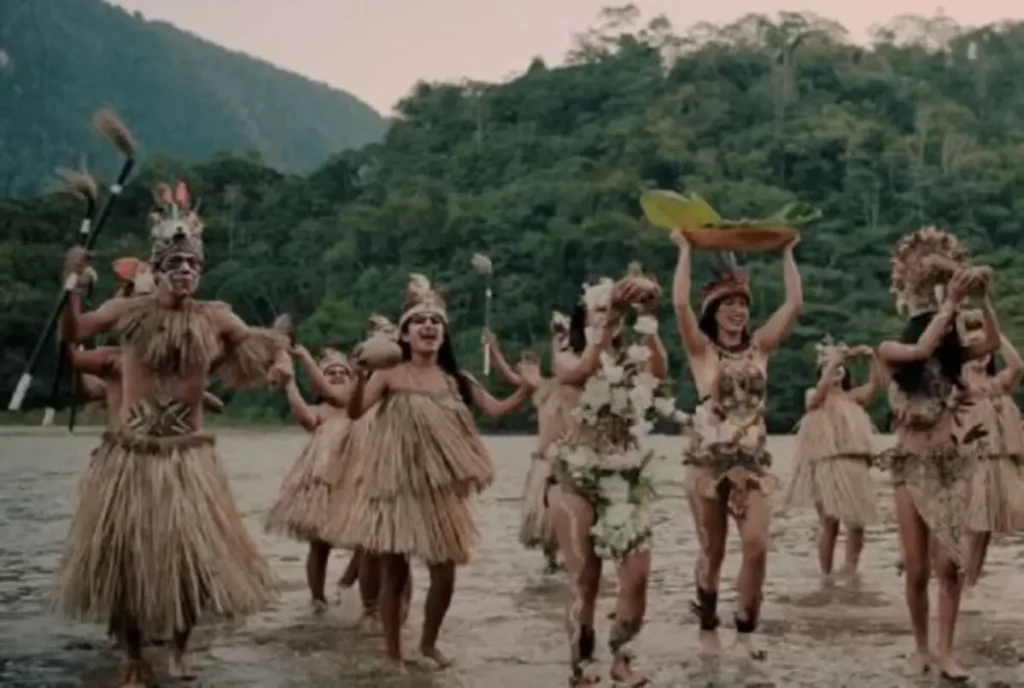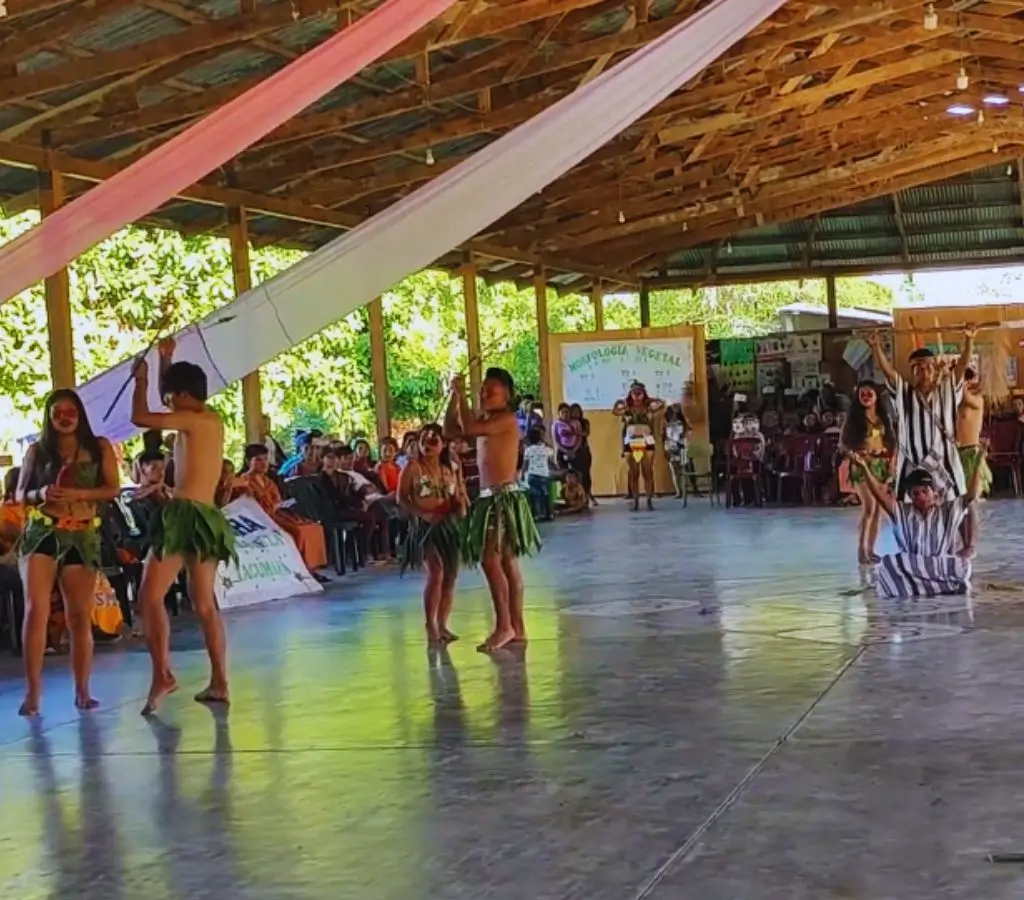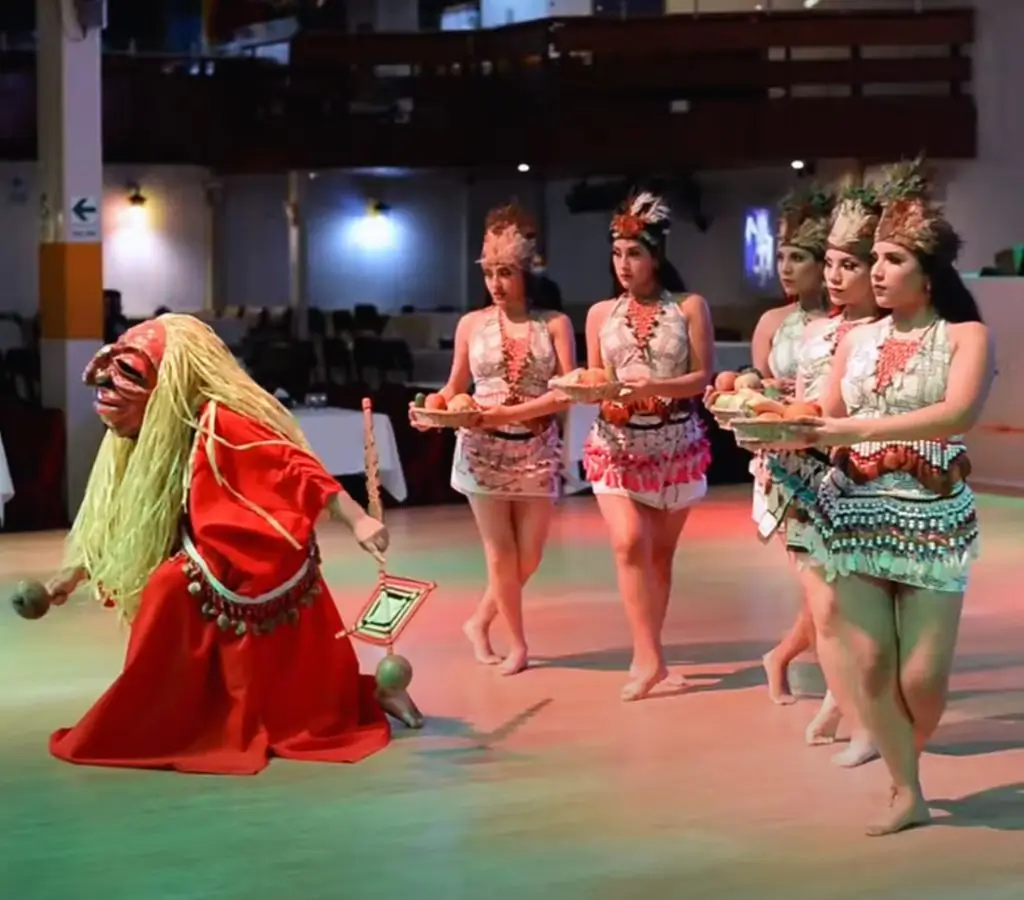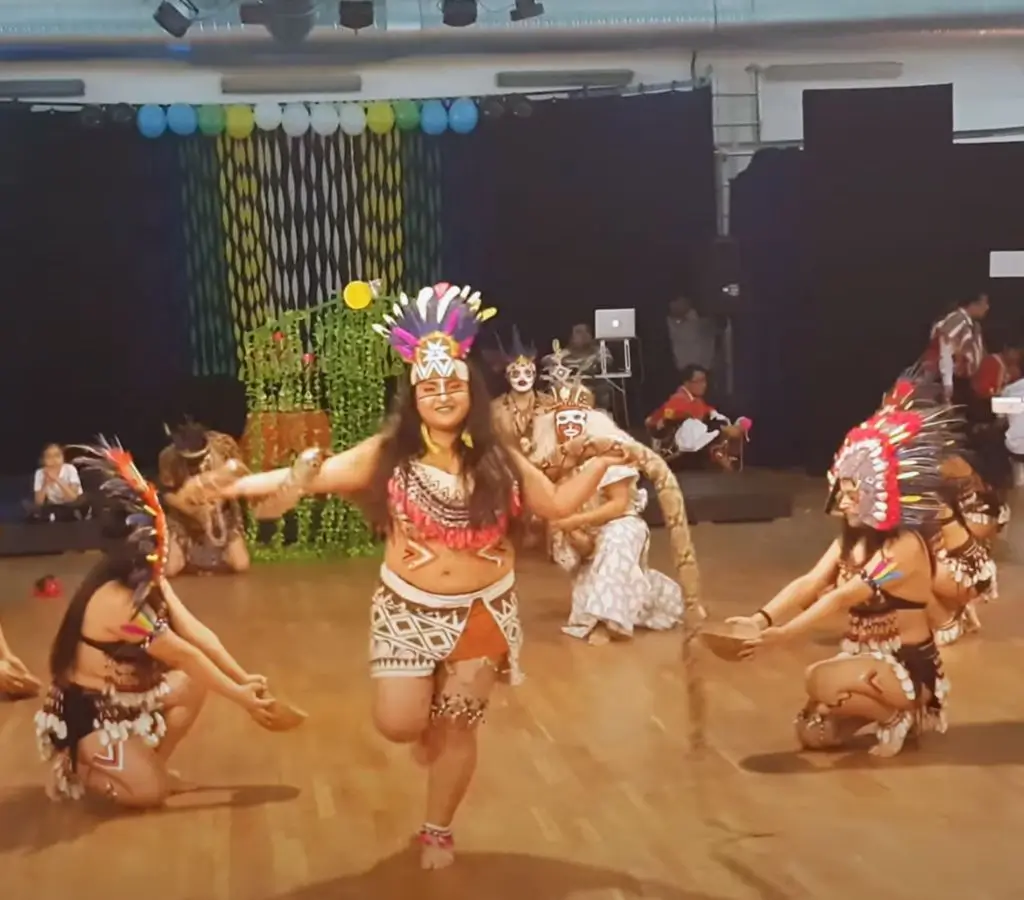The typical dances of the Peruvian jungle are a vibrant and colorful cultural manifestation that reflects the rich ethnic and natural diversity of this region of the country. These dances are a fusion of ancestral indigenous traditions with colonial and mestizo influences, creating a unique and authentic expression of Peruvian Amazonian identity.
The dances of the Peruvian jungle have their roots in the ancient indigenous cultures that inhabited this region before the arrival of the Spanish conquistadors. These cultures developed a wide range of rituals and ceremonies that involved dance as a form of communication with the gods, nature and the ancestors.
Over time, the dances of the Peruvian jungle have been kept alive through generations, passed down from father to son as a fundamental part of the region's cultural identity. Today, these dances continue to be practiced and celebrated at festivals and cultural events throughout the Peruvian jungle, serving as a powerful connection to the past and a symbol of pride for local communities.
Peruvian jungle dances are characterized by their contagious energy, frenetic rhythm and colorful costumes, but also represent war dances, ceremonial and religious dances and each one depending on the situation.
The music, which is usually performed live with native instruments such as drums, maracas and bamboo flutes, is an integral part of these dances, setting the beat and creating a festive and joyful atmosphere.
The movements of jungle dances often imitate animals of the region, such as snakes, birds and jaguars, as well as daily activities such as hunting, fishing and agriculture. Dancers combine fast movements with energetic steps and acrobatic jumps, creating a dynamic and visually stunning spectacle.
The dances of the Amazon region are distinguished by their intimate connection with nature and indigenous traditions. Dancers often wear elaborate masks and headdresses representing jungle animals and deities, as well as adornments of feathers, shells and seeds that reflect the richness of Amazonian flora and fauna.
The music, which is strongly influenced by indigenous traditions, uses indigenous instruments such as the quenilla, bombo, mangueare and maracas, creating a unique and enveloping sound that transports viewers to the jungle itself. The rhythms are varied and complex, reflecting the cultural diversity of the region and the richness of its musical traditions.
The typical dances of the Peruvian jungle are a vibrant and authentic expression of the rich cultural and natural diversity of this region of the country. Through their frenetic rhythms, colorful costumes and energetic movements, these dances celebrate the intimate connection between the Amazonian peoples and their environment, transmitting their history, traditions and values from generation to generation.
This ritual dance, originally from the Ucayali region, is a celebration of fertility and abundance. The name of the Sitaracuy dance means "ant that bites" in Quechua language, here the dancers dress in colorful costumes and animal masks.
The dancers in this case the men represent the ants that chase the women, and they stung by the ant symbolically make gestures of pain and use the expressions ay, ay. For them in this dances it can be seen that they make eqwueño jumps while they simulate the pinches of the ants' bites.

Inspired by the visions and experiences of shamans during ayahuasca rituals, this dance represents a spiritual journey through the Amazon jungle. The dancers, adorned with mystical and abstract symbols, perform trance-like movements while evoking the spirits of nature.

This dance, originating from the Shipibo ethnic group, has a religious and at the same time magical sense in each movement it performs, it is an expression of cultural identity and resistance. The dancers, dressed in traditional costumes decorated with intricate geometric designs, perform rhythmic and synchronized movements that reflect more or less a confrontation of territories.
This dance arose from a territorial conflict between the Shipibos and the Yawuas, inhabitants of the Amazon River, who tried to expand into the Ucayali. After the dispute, the Shipibos prevailed, defending their honor and territory. This artistic expression celebrates their victory and cultural roots.

This celebration, which takes place in several communities in the Peruvian jungle, is a representation of the myth of the anaconda, a sacred figure in many indigenous cultures. The dancers, dressed in costumes that mimic the skin of the reptile, perform serpentine movements while recreating the story of the creation and power of the anaconda in Amazonian cosmology.

This dance, native to the Loreto region, is a celebration of fishing and river life. The dancers, dressed in costumes representing fishermen and aquatic creatures, perform fluid, undulating movements that evoke the beauty and mystery of the Amazonian rivers.
This dance, which is practiced throughout the Peruvian jungle, is a celebration of the cultural and natural diversity of the region. The dancers, dressed in costumes representing the different indigenous ethnic groups, perform vigorous and energetic movements that reflect the vitality and joy of life in the jungle.
Inspired by the majesty and power of the boa, this dance represents respect and reverence for this sacred animal in the Amazonian cosmovision. The dancers, dressed in costumes that mimic the skin of the reptile, perform sinuous and serpentine movements while evoking the strength and mystery of the boa. They use instruments such as tambiores, marcas, quenilla and mangueta that give a special sound to this dance.

This dance, popular in several Peruvian jungle communities, is mainly a ritualistic or ceremonial dance. The dancers, dressed in colorful and flashy costumes, perform joyful and playful movements while interacting with each other and with the audience, creating a festive and lively atmosphere. As they dance they begin to hit the buttocks of the other couples, until they become sore, for this way of dancing is called the pandilla.
Below, we will address some of the most frequently asked questions about these fascinating dances.
The Boa Dance is one of the most emblematic representations of the Peruvian Amazon culture. This dance, like many others in the jungle, has its roots in the close relationship that indigenous communities maintain with the nature that surrounds them. The boa, being one of the largest and most powerful snakes in the region, symbolizes both the danger and vitality of the jungle.
In the Boa Dance, dancers recreate the movements of this giant snake, imitating its sinuous slithering and slow but powerful turns. The dance not only seeks to entertain, but also to transmit ancestral knowledge about the behavior and importance of this reptile in the ecology of the jungle. It is also considered a way to honor and pay tribute to nature, highlighting the interconnection between human beings and the surrounding environment.
The Peruvian Jungle Dance is an artistic expression that reflects the joy, energy and vitality of the communities that inhabit this exuberant region. Its main characteristics are:
Music plays a fundamental role in Peruvian jungle dances, providing the rhythm and melody that guide the dancers' movements. Some of the most common instruments used in these dances are:
In conclusion, all these dances are a living expression of the identity and folklore of the communities that inhabit this tropical region of Peru.


